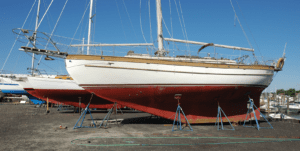HIGH PRAISE FOR CARL ALBERG
Regarding your report “Small-boat Dreams and Carl Alberg’s Classic Daysailers,” my first sailboat, 25 years ago, was a Pearson Electra. Fabulous boat; totally capable of anything Puget Sound could kick up any time of year. Last week (after several good boats over the interim years), I bought a Cape Dory 22. Very similar, gorgeous lines. As you might guess, I’m totally sold on Alberg’s smaller boats. Affordable, seaworthy, and easy on the eyes.
Jane Shapira
via PS Online
TINNED WIRE MYTH BUSTED
Regarding your report on sealing wires (see “Tin Wire Myth Busted,” (see PS June 2008), I’ve repaired just as many tinned wire problems as I have bare copper in the boats I’ve worked on. The key is the connections. If moisture can’t get in the wire and migrate under the insulation, the wire will not corrode. Once you cut tinned wire, the bare copper ends are exposed, therefore attracting corrosion if not properly sealed. I have a 1985 Boston Whaler that was factory wired with bare copper, but the terminal connections were all sealed with heat shrink and I have had zero issues with corrosion.
Tom Collier
via PS Online

FIBERGLASS BOAT STRENGTH
Regarding your report, “Storm Damaged Boats Reveal the Limits of Fiberglass Hull Construction” (see PS August 2007), I believe a wide, thick, keel stub laminate that slopes fore and aft is the best design to survive a straight-in hard grounding on a rock reef where the contact point is the leading edge of the lead keel. Rather than shearing keelbolts, the impact actually lifts the boat, compressing the keel-to-stub joint as the boat does a handstand and stops. As long as the hull laminate is properly thick at the aft end of the keel to absorb the compression, the likelihood of significant damage is small. Even at hull speed.
Ed Lare
via PS Online







































